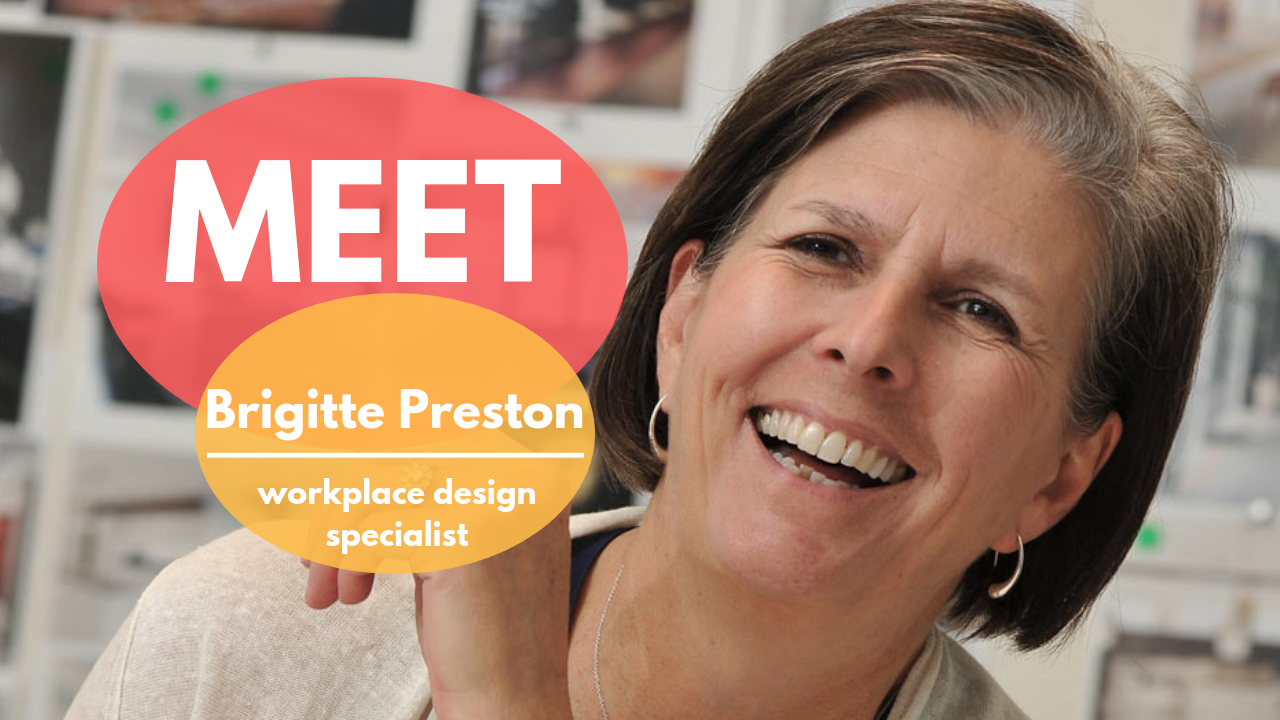- Allwork.Space spoke with Brigitte Preston, workplace design specialist at Perkins+Will, to learn more about the link between design and community.
- Preston explains how the design of a space facilitates interactions, and these interactions can help strengthen an organization’s purpose.
- In addition, Preston believes that wellbeing and sustainability will take a larger role in workplace design in 2019.
The workplace has changed more over the past five years than in the quarter of a century before that. Brigitte Preston, Principal at Perkins+Will believes coworking spaces are the manifestation of the exponential changes that the workplace has experienced in the last 5 years.
Preston has over 30 years of experience in design and her passion lies in promoting community involvement in the workplace through design and architecture. In a phone call with Allwork.Space, Preston addressed how, through design, flexible workspace operators can foster a lively and engaged community.
“The way I think about the workplace is that it’s not an office, it’s an extension of life. When we think of workers today, we think about words like happiness, purpose, and being fulfilled.”
Work talk has moved away from salary and high wages and has shifted into purpose, social responsibility, and wellbeing.
Preston divides the workplace into three core elements:
- Community
“People come together at work as a community for one reason, and that is to do good work. This means we have to create spaces that support and encourage this type of work.” - Learning
“One of the biggest motivators for today’s worker is that they want to get better at what they do, they are learning on a continual basis.” - Purpose
“Young people want to connect with the purpose of an organization; it’s what keeps them around. Even among coworking operators, their members have a reason why they chose and stayed in that particular place; organizations need to think about ways to address this within the work environment.”
Infusing community, learning, and purpose through design
Incorporating purpose into workplace design is a hard thing to do; but it’s the one that will likely have the most impact.
“The actual design of a space is critical to the success of the interactions people will have within the space. These interactions can help strengthen an organization’s purpose. The community aspect of a workplace comes to life when you design the right type or types of space.”
Today’s workplace is all about choice.
To bring life to a space and to help create a sense of community and an environment that encourages learning, Preston suggests creating a variety of space types for different uses.
“You need to create the opportunity for people to do the things that they have to do in the best possible setting. When people walk into your space, what do they see? They should see private areas, shared areas, and community areas like a cafe, a lounge area, and so on.
“Think of the workplace as a city. There are walkable cities where there is always something going on for the couple, for the family, for the group of friends, for the visitors, and more. Modeling after certain city principles can be really successful for interior spaces, especially if you’re looking to create a multifunctional space; for example, a room that is a training room during the day can transform itself into event space at night.”
Creating these types of environments will help bring your people together and provide them with choice over how and where to work. It will help them give meaning and purpose to the space they’re using, the space they’re sharing, and the space where they are learning (from their interactions with others and from their own work).
A note about sustainability and wellness
Wellbeing and sustainability are two elements that organizations need to incorporate into the work environment if they want to establish a shared sense of purpose with individuals. People today care about the environment and about their wellbeing.
“Incorporating elements of fitness, meditation, yoga, fresh air, daylight, and nourishment into the workplace is a big part of workplace typology. These types of amenities and strategies will be a huge driver of office design next year.”


 Dr. Gleb Tsipursky – The Office Whisperer
Dr. Gleb Tsipursky – The Office Whisperer Nirit Cohen – WorkFutures
Nirit Cohen – WorkFutures Angela Howard – Culture Expert
Angela Howard – Culture Expert Drew Jones – Design & Innovation
Drew Jones – Design & Innovation Jonathan Price – CRE & Flex Expert
Jonathan Price – CRE & Flex Expert












